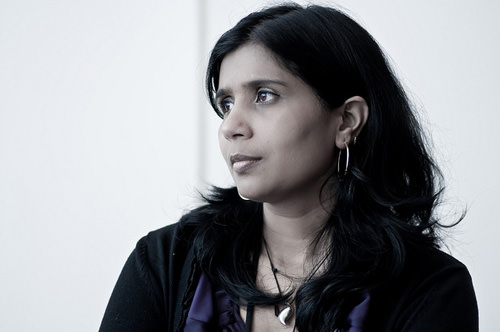9 Women Who Changed How We Use The Internet
Diversity in tech companies is one of the hottest topics in cyberspace now and shows no sign of dying down. This is mainly prompted by the biggest tech corporations like Facebook, Twitter, and Google releasing their workers diversity data sparking fresh debate on why there aren’t more women working in tech. It has also sprouted new initiatives to spread awareness and educate more girls to code like Google’s Made With Code.
But that doesn’t mean that the Internet is lacking in talented women. Generally found behind the screens, they’ve brought us the World Wide Web that we know today. Critics say that these women were not given enough recognition for their efforts unlike the men and in many instances, they are right. Not to say that all of them go unnoticed but you might not have heard of some or most of them. So we decided to do a little digging and found these 9 women who significantly contributed to how we use the Internet today.
40 People Who Changed the Internet
Having a great idea is one thing. Turning that idea into a booming company through innovation and execution... Read more
1. Radia Perlman

This list wouldn’t be complete if we don’t revisit history and include Radia Perlman who is widely hailed as the Mother of the Internet. Perlman is most famous for creating the spanning-tree protocol (STP). STP bridges two computer networks so that they can exchange information. You can see its usage in Local Area Networks (LAN) where many computers are accessing one network and the Ethernet.
STP made the Internet possible, as it allows the Ethernet to handle large amounts of information being exchanged and stored which set the precedent of cloud computing. As a software designer and network engineer, Perlman is also credited with inventing the Transparent Interconnection of Lots of Links (TRILL) to make up for STP’s shortcomings.
2. Elizabeth Feinler

Wired described Elizabeth Feinler as the person “before Google and GoDaddy”. Feinler is considered the pioneer of the Internet when she was the Director of the Network Information Center (NIC) at the Standford Research Institute (SRI) from 1972 to 1989. She also managed the ARPANET, the network that connected various research centers across the country, which was seen as the predecessor to the Internet.
Feinler was more commonly known as Jake, a nickname given by her sister that stuck. In managing the NIC, Feinler oversaw the creation and registration of Internet addresses or URLs. It first started out manually with Feinler and her team maintaining and publishing directories of people. The resources were distributed via snail mail and was also available through a telephone hotline the team set up.
Over time as the Internet evolved, the NIC came up with the Dormain Name System (DNS). DNS maintains the naming scheme of URLs such as .com, .edu, .gov, .mil, .net, .org as well as translating domain names into IP adresses. Needless to say, these contributions of hers are still in use today.
3. Caterina Fake

Caterina Fake co-founded with her husband Stewart Butterfield popular photo-sharing site Flickr in 2004. Yahoo! then acquired Flickr in 2005. Before Flickr came about, photo-sharing meant sending your pictures through email. And you know how sending photos via email was years ago when emails couldn’t handle attaching photos in bulk.
Additionally, the existence of Flickr also brought about the advent of many of Web 2.0’s features like social networking, tagging, algorithms that bring up popular content, and community open APIs. Interestingly the site was meant to be a multi-player gaming site until lack of funds spurred Fake and her husband to change tack.
4. Mitchell Baker

If it weren’t for Mitchell Baker, most of us would still be browsing the Web with Internet Explorer. As Executive Chairwoman of the Mozilla Foundation and Mozilla Corporation, Baker led part of Netscapes team on the Mozilla project. The project, as you can tell from the name, birthed the open source web browser, Mozilla Firefox, which made the Internet experience safe and stable.
Trained as a lawyer, Baker used her expertise to create Netscape’s open source license, making it free as well as the basis of Mozilla’s public license. It helped pave an era of open source software and inspired open source projects such as GitHub, HTML5 and Android.
5. Rashmi Sinha

If it wasn’t for India-born Rashmi Sinha, there wouldn’t be SlideShare. Sinha caught the Web bug when she was researching on how search engine optimization as well as algorithms work to help push recommended content at the University of California, Berkeley. After her research, she went on to start a user-experience consultancy Uzanto which provided services to companies such as eBay, AAA, and Blue Shield.
In 2006, Sinha and her husband Jon Boutelle co-founded SlideShare. She became its CEO while her husband is the CTO. As you know, the site makes it possible to share PowerPoint slides online without the need of a presenter. SlideShare’s user-based community and user-friendliness draws people to discover new content as well as generates its own traffic. In 2012, LinkedIn acquired the presentation-sharing site for over $100 million.
6. Leah Culver

You may not have heard of social networking site Pownce, as it met its early demise in 2008. Many attributed it to the acquisition by software company Six Apart, who was after the talented staff of Pownce, which was then Twitter’s biggest competitor. What almost nobody focused on is that it’s possibly the reason why Facebook and Twitter is now able to share and attach links, files, photos and videos on their platforms. And the women behind it is Leah Culver.
Interestingly Culver switched her art major for computer programming when studying at the University of Minnesota. A year after she graduated in 2006, she launched Pownce with Kevin Rose and Daniel Burka. Culver is the lead developer for Pownce having created the site from scratch using the Python programming language.
7. Marissa Mayer

Currently, Marissa Mayer is the president and CEO of Yahoo!. Before that however, everyone knew her as Google’s employee number 20 in 1999 and the search engine’s first female engineer. Anyone who is tech news savvy will know that Mayer worked on a slew of Google services that we all use. Among them are Google Search, Google News, Google Images, and Google Chrome.
Her attention to detail and user-first mindset contributed to the look and feel of these products. She was so good at her job that she became Vice President of Search Products and User Experience. In her final two years at Google, she was made Vice President of Local, Maps, and Location Services. In this division, she oversaw the engineering and design of Google Maps, Google Earth, Street View and local search for both web and mobile.
8. Mena Trott

Mena Trott made it possible for us aspiring writers to start out by blogging. In fact, she made it easy to blog. Trott co-founded Six Apart with now former husband Benjamin in 2001 that specializes in developing blogging software. The company came up with Movable Type in 2001, a blogging software that is similar to and precedes WordPress.
Before Six Apart and Movable Type, blogging meant hard-coding your own online diary. In 2003, Trott and her team came up with blog hosting service, TypePad, based on Movable Type’s software and features easy-to-use blogging tools. Some of the tools include multiple author support, photo albums and mobile blogging. Six Apart eventually came up with blogging platform Vox and acquired Livejournal before it finally joined forces with VideoEgg to become SAY Media in 2010.
9. Susan Wojcicki

Another Google employee, Susan Wojcicki was responsible for selling ads on the search engine giant. Recently made the CEO of YouTube in February 2014, Wojcicki used to lead Google’s Advertising and Commerce division. She first started out as Google employee number 16 as its Marketing Manager and if it weren’t for her renting out her garage to Sergey Brin and Larry Page in 1998, there would be no Google.
During her tenure as Vice President of Advertising and Commerce, Wojcicki came up with AdWords and AdSense. The 2 advertising services are why you see ads on websites and blogs today which contributed 96% to Google’s revenue. Wojcicki is also the person responsible for acquiring YouTube and DoubleClick as well as developing the doodles on Google’s home page.